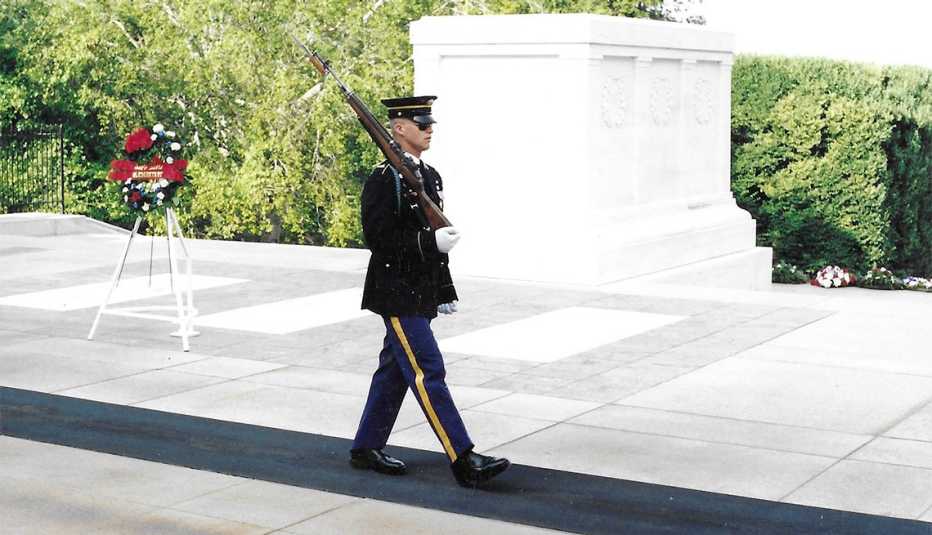AARP Hearing Center
Once he was cast as an extra playing a soldier in a major movie, Ethan Morse was finally pursuing his dream of making it big in Hollywood. However, little did he know that an impromptu visit to Arlington National Cemetery would alter his trajectory from portraying a soldier on-screen to being a soldier in real life.
Morse was filming Gods and Generals in the Washington, D.C., region when a friend suggested that they pay a visit to the Tomb of the Unknown Soldier.
Having grown up on a dairy farm in upstate New York, Morse was familiar with Arlington National Cemetery but hadn’t heard about the tomb dedicated to unidentified service members killed in war.
“I often got emotional when I talked about it, because it was something I'd never seen before in my life. Especially not back on the farm,” he said. “We watched two guard changes. I was overcome by emotion. I love to talk, and after we left there, I couldn't talk for a number of hours.”
A call to action
Morse had always told his family that he would never join the military unless the U.S. was attacked. So when the Sept. 11 attacks occurred, the then-21-year-old went to the Army recruiter’s office and put his film dreams on pause.
“I barely had my uniforms issued to me, and a sergeant walked in, and he was recruiting from all the infantry guys there to go to Arlington,” Morse said. “I was hoping maybe I’ll just get assigned to the tomb. Little did I know that that’s not how it works.”
Instead, he was assigned to be a casket bearer and had to train for two months, lifting weights, carrying rock-filled caskets and practicing flag folding.
“Each soldier was practiced and trained to perfection. I was really overcome with the responsibility of burying the fallen. And it was very humbling to be there,” he said.
After about 13 months as a casket bearer for over 300 burials, Morse’s platoon sergeant approached him with his new assignment, guarding the Tomb of the Unknown Soldier.
A serious mistake
Tomb guards ceremoniously march 21 steps down a black mat behind the tomb, turn, face east for 21 seconds, and then turn and face north for 21 seconds. They then take 21 steps down the mat to repeat the process. The number 21 symbolizes the highest military honor, the 21-gun salute.
Before a tomb guard, also known as a sentinel, starts duty for the day, he or she must pass a detailed white-glove inspection by a commander.



































































More on home-family
Wounded Marine Moves Into Smart Home Thanks to 'Forrest Gump' Actor
Gary Sinise's role in the film inspired his real-life call to dutyGulf War Vets Disability Deadline Extended
VA accepts range of service-connected illnessesVietnam Veterans Remember the War
On National Vietnam War Veterans Day, memories and opinions remain strong